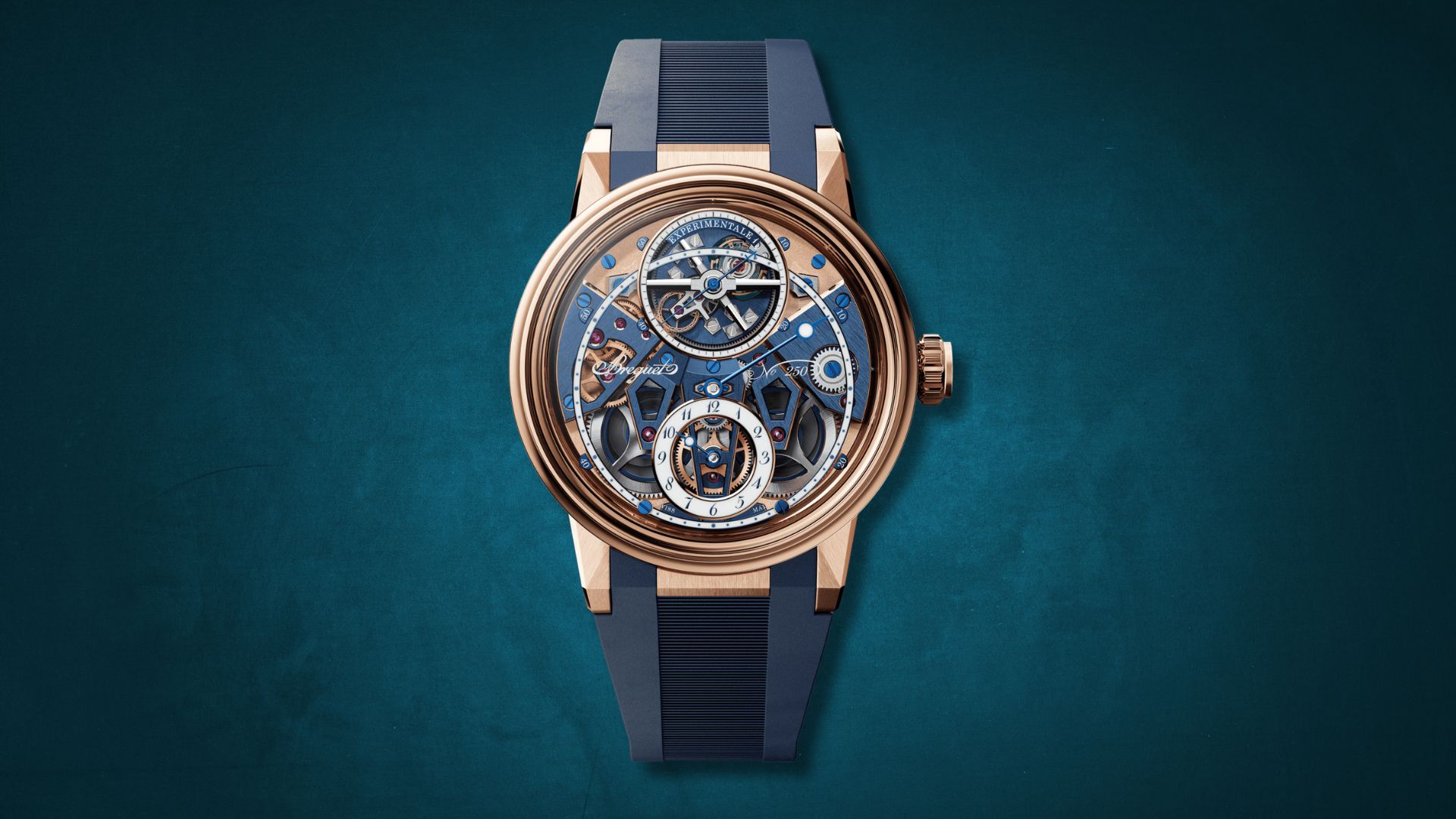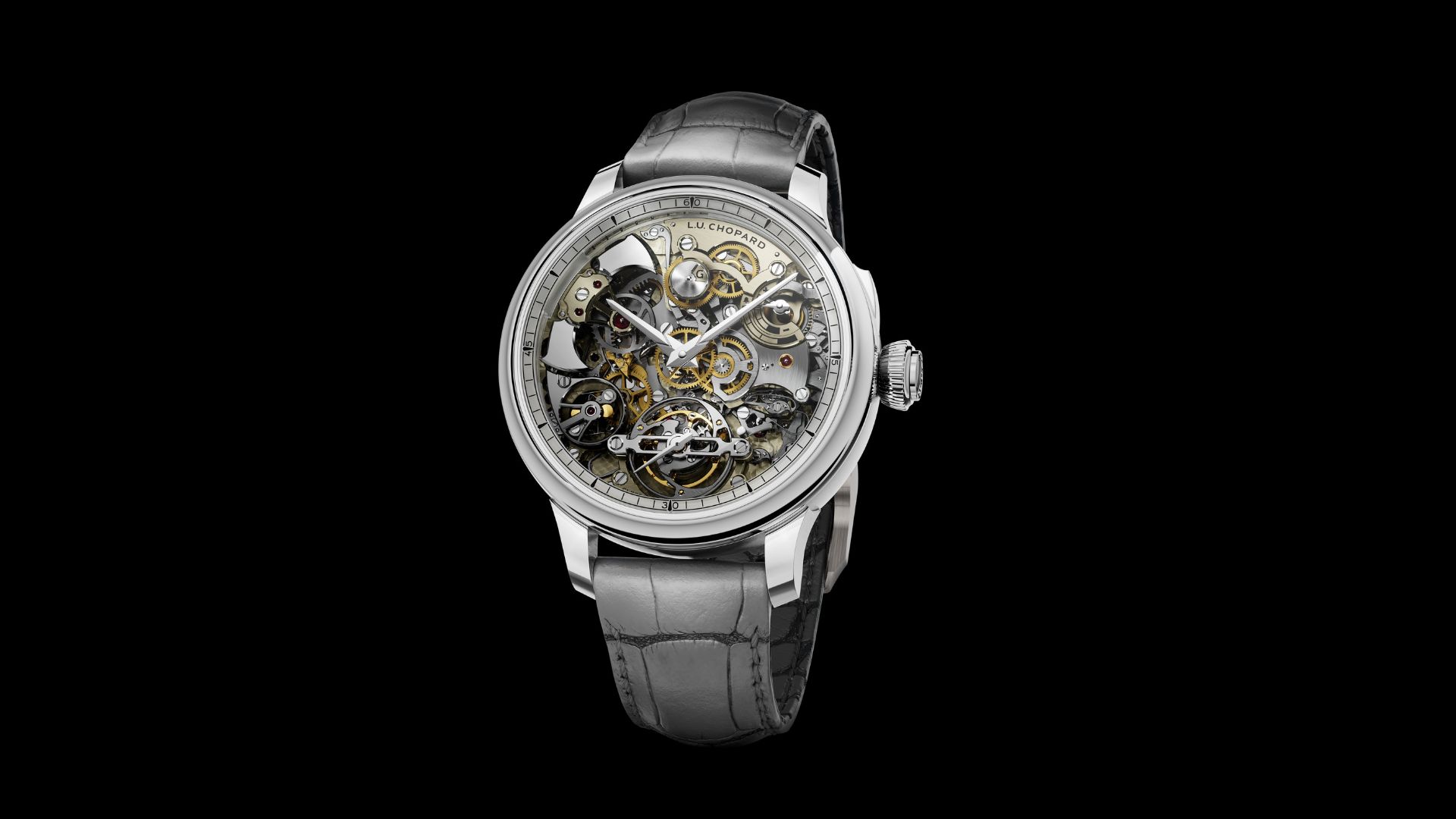Grand Prix d’Horlogerie de Genève: Winners Announced


Grand Prix d’Horlogerie de Genève, which began its journey in 2001, is the most coveted award ceremony in the world of horology. Needless to say, it has often been called the ‘Oscars’ of the timepiece industry. Winners are announced in various categories, such as men's/women's watches, sports watches, technical innovation and complication.
Let us look at the winners this year.
Aiguille d’Or Grand Prix: MB&F, Legacy Machine Sequential Evo

The Legacy Machine Sequential Evo by MB&F was a major winner at the event. The key feature of the watch involves its dual, fully functioning chronograph displays, each with a 60-second counter and a small 30-minute counter. The chronographs can be started and stopped and rest independently via start/stop and reset pushers on their case sides. The timepiece also has a ‘Twinverter’ button that allows for multiple time modes, split seconds, lap timer, and a chess match mode. MB&F has created two column wheels and vertical clutches to ensure that there is no delay in power reserve.
Ladies’ Watch Prize: Parmigiani Fleurier Tonda PF Automatic

With a clean, elegant design that stays true to the spirit of Parmigiani, the Tonda PF Automatic 36 mm is only a slightly scaled-down version of the model that has become a signature of the brand: the Tonda PF Micro-Rotor. The smaller dimensions make it ideal for more slender wrists. Inside the watch is the automatic in-house PF770 movement and there’s a 60-hour power reserve. The satin-finished, 18-carat rose gold case and bracelet complement the knurled bezel; the Grain d'Orge guilloché minimalist dial, whose colour is listed as ‘Deep Ruby’, adds an easy grace. The baguette-cut diamond indexes lend just the right amount of twinkle without overwhelming the overall aesthetics.
Ladies’ and Men’s Complication Watch Prize: Hermès Arceau Le temps voyageur

The Hermès Arceau Le temps voyageur is basically a watch meant for frequent travellers, with a ‘travelling time’ function displaying 24 different time zones. A total of 122 components move the counter and the home time indication is displayed at 12 o’clock. This has been fully integrated with Hermès H1837 mechanical self-winding movement. This mechanism also powers the hours, minutes and dual-time display with a city indicator. The timepiece is crafted from platinum and titanium or entirely in steel. The asymmetrical lugs showcase world time. The moving counter covers continents over different time zones. Local time is shown on a sundial placed on a ‘satellite’ that moves all over the dial. The wearer uses the pusher at 9 o’clock so that the satellite represents the home timezone while the crown at 3 o’clock when pulled to position 3 sets the time in the satellite to the correct time.
Men’s Watch Prize: Akrivia Chronomètre Contemporain II

The movement of this timepiece is the hero. The watch now has a brand new Calibre RRCC02, which also features a double barrel with a power reserve of 82 hours. The movement also offers a zero-reset that moves the second hand to its original 12 o’clock position when the wearer pulls out the crown. The watch comes in a 38 mm platinum case. Turning the watch reveals the RRCC02 movement that can resemble the previous model but with a new construction and different mechanics and functionality while maintaining the design and core of its predecessor.
Iconic Watch Prize: TAG Heuer Monaco x Gulf

The iconic shape of the watch has made it a favourite among collectors and watch enthusiasts. Powering the watch is the Heuer 02 movement with 80 hours of power reserve. The dial has a combination of blue and orange colours dedicated to the Gulf brand. The stainless steel watch has two pushers at 2 o’clock and 4 o’clock to start and restart the chronograph function, a 12-hour counter at 9 o’clock, and a 30-minute counter at 3 o’clock, with a date window at 6 o’clock and just above that is the seconds hand. The central chronograph hand at 12 o’clock is in orange colour, representing the logo colour of Gulf.
Tourbillon Watch Prize: H. Moser & Cie. Pioneer Cylindrical Tourbillon Skeleton

This timepiece has been designed and curated only for collectors. The 2022 H. Moser & Cie.’s Cie Pioneer Cylindrical Tourbillon Skeleton watch has a cylindrical balance spring, implying that the centre of gravity is always on the move. This watch comes with a 42.8 mm stainless steel case, with a fumé blue dial that goes dark blue on the edges, with only hours and minutes hands. There’s a white H. Moser & Cie. logo. Another key feature of the watch involves its one-minute flying tourbillon at 6 o’clock for optimum precision in time viewing. The white hour markers and hour and minute hands use Globolight®. Powering the watch is the Calibre HMC 811, self-winding, three-dimensional manufacture movement with a 3 Hz frequency and a power reserve of minimum 74 hours.
Calendar and Astronomy Prize: Krayon Anywhere

The 39 mm white gold watch (Ref.C030-01) is the second timepiece from the Swiss watch manufacturer that showcases the length of the day and the time of sunrise and sunset. The central hour, minute hands display time with an annular zone upon which a ‘small sun' circulates in perpetual motion, indicating the time over 24 hours. The watch sits on a black leather strap.
Mechanical Exception Prize: Ferdinand Berthoud FB 2RSM.2-1

The design of the watch draws inspiration from the Marine Clock No. 8, commonly known as H.M.8 that was created in 1768 by Ferdinand Berthoud. The watch has a pillar-type structure in its FB-T.FC.-RSM calibre. The regulator-type display of the watch signifies that the time indicated by hours, minutes and seconds is not coaxial. The hours are read off via a rotating disc at 2 o'clock; the minutes are indicated on the subdial at 12 o'clock; and the seconds hand occupies a central position on the watch face. The 18 ct gold dial is hand-engraved and bears the ‘No. 8’ inscription like the original No. 8 Marine Clock. The 39 mm timepiece sits on a white, rose gold or stainless steel case. The watch displays sunrise and sunset; the solar disc showcases midday via the light blue sector and midnight via the dark blue sector, which rotates once around the periphery of the dial each day. The subdial at 6 o’clock represents the month of the year and the date.
Chronograph Watch Prize: Grönefeld 1941 Grönograaf Tantalum

The 40 mm tantalum watch is the first watch from The Netherlands-based timepiece maker, owned by brothers Bart and Tim Grönefeld. The chronograph has a subdial for reading time at 1 o’clock, with a sector for power reserve at 10:30, a centre chronograph seconds hand and a subdial for the 30-minute chronograph counter at 6 o'clock. On the dial, there is a large balance wheel at 4 o'clock as well. Limited to just 25 pieces, the manual winding movement gives it a power reserve of 53 hours.
Diver’s Watch Prize: Tudor Pelagos FXD

The Pelagos FXD model (where FXD refers to the extra FiXed strap bars of the case) draws inspiration from the TUDOR divers’ watches historically used by the French Navy. The 42 mm satin-brushed titanium case and the lack of a bracelet make it feel extra light. The bidirectional rotatable bezel meets the specific needs of underwater navigation. The bezel ring exceeds the case’s diameter, allowing for better grip. The square hour markers and angular hands, among the hallmarks of the TUDOR diver’s watches introduced in 1969, amp up the luminescence of the watch to ease navigation. The watch is driven by the Manufacture Calibre MT5602, has a 70-hour power reserve and makes for a great addition to a serious diver’s kit.
Jewellery Watch Prize: Bvlgari Serpenti Misteriosi High Jewellery

The Serpenti Misteriosi secret watch in rose gold is powered by one of the smallest mechanical movements to date: the in-house micro-calibre Piccolissimo (BVL 100 calibre, 12.30mm x 2.50mm). The rose gold case is embellished with diamonds and turquoise inserts, and the dial remains hidden inside the snake's mouth, to be opened by pressing the forked tongue. The 40 mm watch has a 30-hour power reserve and 3 Hz frequency. It seamlessly combines high jewellery craftsmanship and decorative excellence with Swiss watchmaking expertise; the end result is a striking piece of wearable jewellery that comfortably coils around the wrist with the tenacity of an actual serpent.
Artistic Crafts Prize: Voutilainen Ji-Ku

A collaboration between Tatsuo Kitamura — one of the greatest lacquer artists of Japan — and esteemed watchmaker Voutilainen, this perfectly merges Japanese tradition with Swiss haute horlogerie. The watch comes with a visually-stunning dial that uses Saiei Makie and Somata Zaiku lacquering techniques, a process that takes several months. The raw materials used include Kinpun (gold dust), Jyunkin-itakane (gold leaf) and Awabi-gai (abalone shell from New Zealand). It measures 39 mm by 11.9 mm in platinum; the hands are white gold and steel. On the outer edge of the dial is a worldtimer: it displays a second time zone alongside listed cities of the world and a peripheral 24-hour disc. It’s a watch and a piece of art, all at the same time.
‘Petite Aiguille’ Watch Prize: Trilobe Nuit Fantastique Dune Edition

The display of this quirky watch is made of four parts, three of which are in permanent rotation. The watch is quintessentially minimalistic and elegant. Available in either 38.5 mm or 40.5 mm, the newly created system separates hours, minutes and seconds into individual discs that rotate regularly. The self-winding movement has a 48-hour power reserve. The intertwining of minutes and seconds gives a glimpse of the infinite and time that goes on endlessly, within a satin-finished and polished in-dial bezel.
Challenge Watch Prize: MB&F M.A.D 1 Red

The MB&F M.A.D 1 Red is a remarkable timepiece that’s reasonable in terms of its pricing. The 42 mm watch comes in a stainless steel case, similar to that of its predecessor. The watch has a lateral time display with two revolving cylinders for hours and minutes. The new watch has a red cherry dial in lieu of the blue colour that the original watch had. The front and the centre of the watch are made of titanium and the tungsten triple blade rotor is visible on a reworked Miyota 821 movement on the front of the watch where the dial is placed.
Horological Revelation Prize: Sylvain Pinaud Origine

The new 40 mm stainless steel watch has an asymmetrical dial with a stop balance wheel at 6 o’clock. The silver, hand-angled, three-piece dial watch gets rose gold hands with a 60-second subdial. When the wearer releases the lever, it stops the balance wheel for accurate time setting. The watch gets a transparent sapphire crystal caseback, revealing the entire movement. This manual-winding watch has a power reserve of 55 hours. The watch is completed with a brown leather strap.
Mechanical Clock Prize: Van Cleef & Arpels, Fontaine Aux Oiseaux Automaton

The automaton clock has been crafted from yellow gold, white gold, and rose gold with coloured sapphires, emeralds, tsavorite garnets, mandarin garnets, amethysts, diamonds, lapis lazuli, turquoise and so on. The object has both automatic and mechanical movements with a retrograde display. The time scale is placed at the base and is represented by a feather. Once the whole movement is activated, it showcases rippling water in the basin, a blooming water lily, a fluttering dragonfly and singing birds at the edge of the basin.
Image Credits: GPHG


















